Arts and Culture 17 January 2012

“There’s no voice greater than the voice of the intifada” (Image courtesy of the artist)
Tonight, Palestinian street artists struck again – as they had promised to do – this time in southern Jerusalem, or more specifically “in Talpiot, an Israeli commercial area, built on Palestinian land of Baqaa and Beit Safafa.”
Last week, this anonymous group of Palestinian artists left their mark in the center of western Jerusalem, symbolically reclaiming spaces from which Palestinians had been ethnically cleansed.
They have now issued a statement – in English and in Arabic – explaining their actions. Below the statements you can find photographs of their latest work.
The maps are centered on the area where the photos under each map were taken.
This is Palestine
The act of marking the streets is one that has been used in struggles all over the world as well as here in Palestine especially during the First Intifada. Street art is simply one tool that we are using in our struggle for freedom. This is our message to both our occupiers and our people here in Palestine and around the world, we are still here and our voice is still loud, we will continue to resist. It is the voice of the youth of Palestine who are struggling to change their reality every day. Until there are masses marching, the streets can send a message in another way, and we’re using a stencil and spray paint to do it. One image at a time we are aiming to break the fear and lack of motivation of our Palestinian people and call them to rise.
This is our second street art action and it is the continuation of a longer popular resistance struggle that we are all committed to. While the doors of Jerusalem remain closed to the majority of our people, our actions here are aimed at breaking the locks of this sieged city. Our first action marked the streets of the west side of Jerusalem that has been under intensive Judiaization aimed to erase Palestinian history. Our second action is in Talpiot, an Israeli commercial area, built on Palestinian land of Baqaa and Beit Safafa. This is our message to those shoppers who ignore the history of this land, ignore the call for justice, and ignore the Palestinian right of return.
هنا فلسطين
فن الشارع أحد وسائل النضال التي اعتمدتها ثورات العالم أجمع كما اعتمدها الفلسطينيون لاسيما أثناء الانتفاضة الأولى .هذه إحدى السبل التي اخترنا استخدامها في نضالنا من أجل التحرر. هذه رسالتنا لمحتلينا ولأبناء شعبنا في فلسطين كاملة وفي الشتات لنقول إننا هنا وإن صوتنا ما زال هدّارا وبأننا سنستمر في المقاومة. هذا هو صوت شباب فلسطين الذين يناضلون من أجل تغيير واقعهم يوميا. إلى أن تنطلق الحشود في شوارعنا سنتمكن من نقل رسالتنا بطرق عديدة أخرى والآن علبة دهان وقالب مقصوص يخدمان غايتنا. بصورة تلو الأخرى نحاول كسر انعدام دوافع أبناء شعبنا للتحرك وندعوهم للنهوض.
هذه فعاليتنا الثانية وهي استمرارية لمقاومة شعبية نلتزم بها جميعا خاصة حين أمست القدس موصدة الأبواب بوجه غالبية أبناء شعبنا، ونشاطنا هذا يهدف لكسر أقفال حصار هذه المدينة. استهدفت فعاليتنا الأولى شوارع الجانب الغربي للقدس الذي تعرض لعملية تهويد مكثفة تنزع لمحو تاريخها الفلسطيني. نشاطنا هذه المرة في (تلبيوت) منطقة صناعية وتجارية إسرائيلية بُنيت على أراضي حيي البقعة وبيت صفافا الفلسطينيين وهي رسالة لأولئك المتسوقين الذي يتجاهلون تاريخ هذه البلاد والمطالبة بالعدالة وحق أهلها بالعودة.
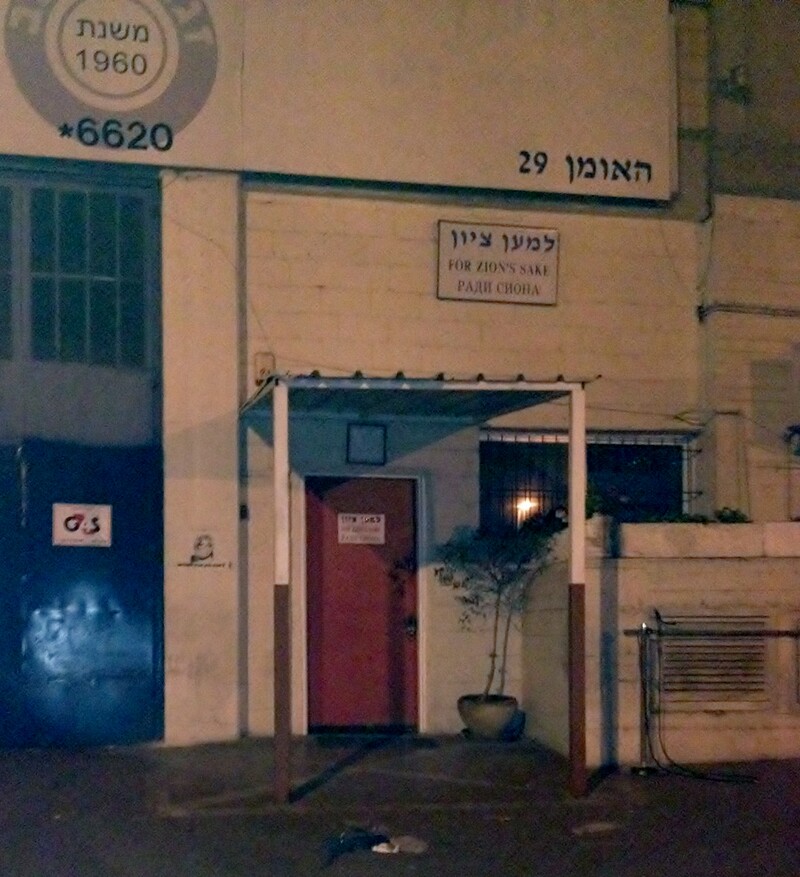

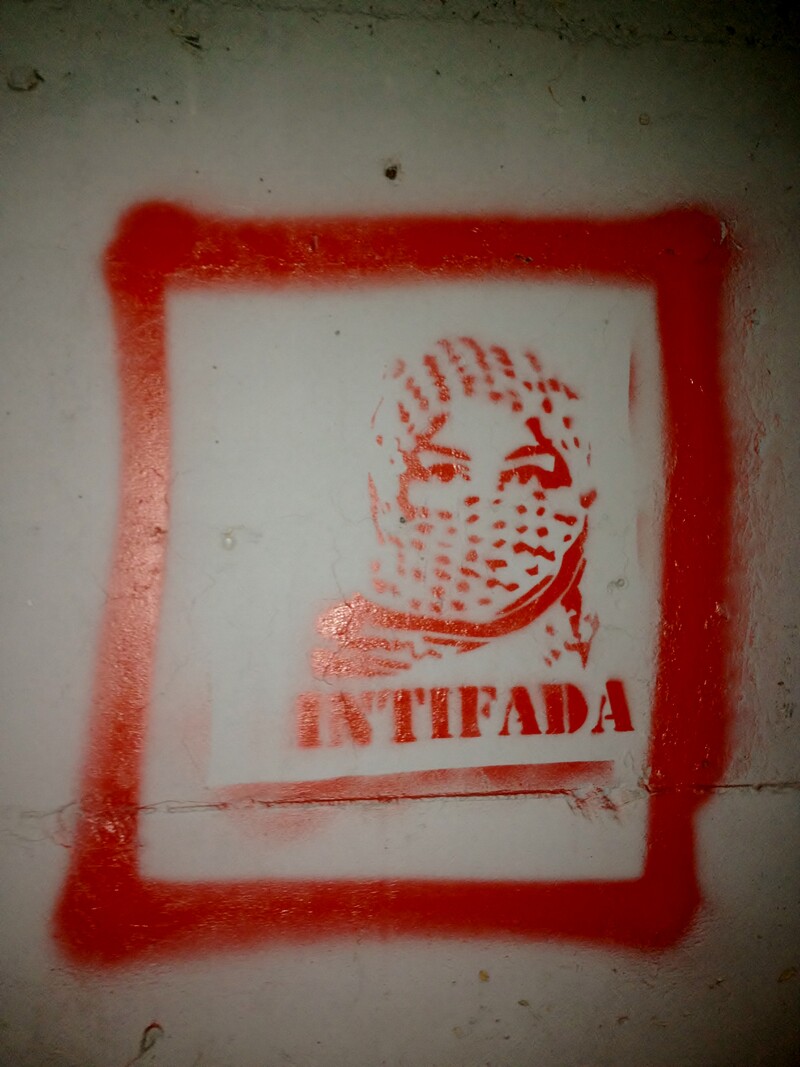
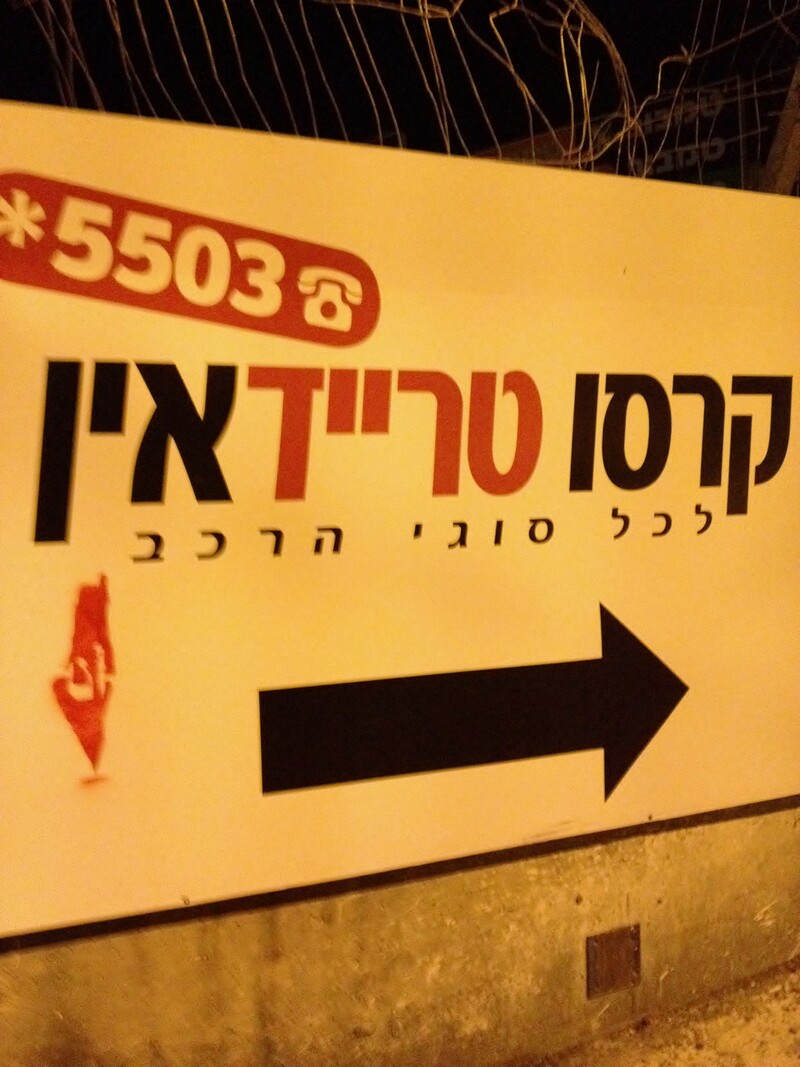
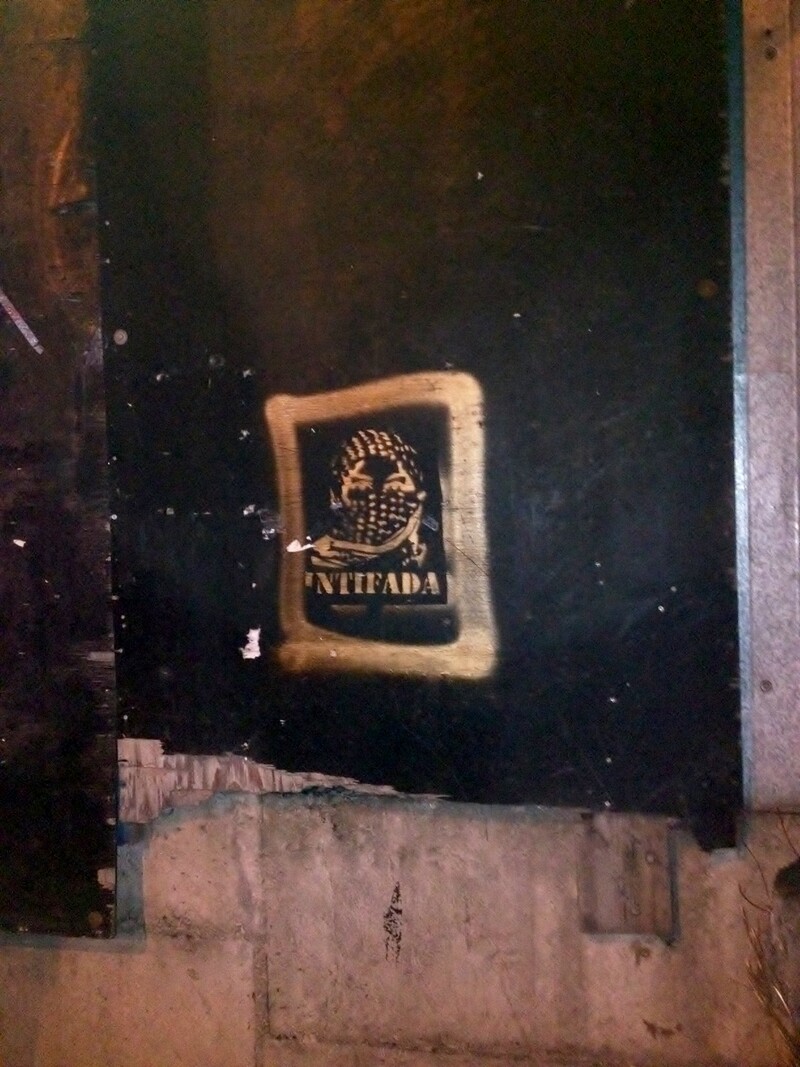
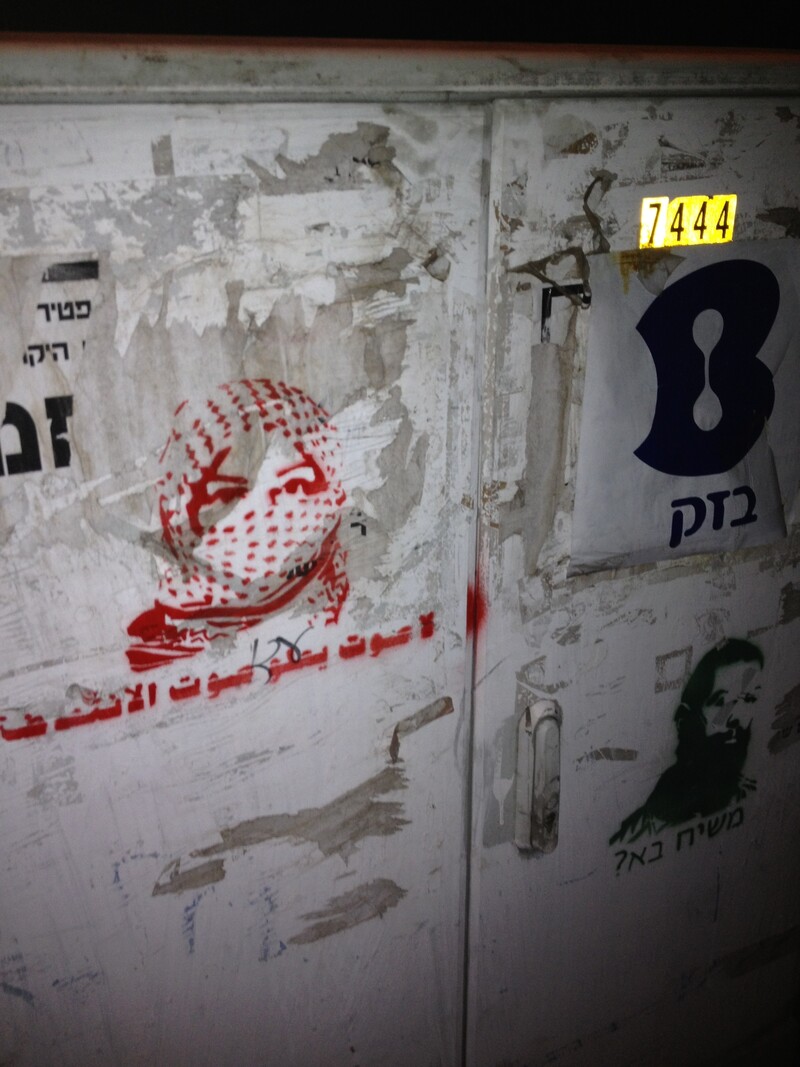
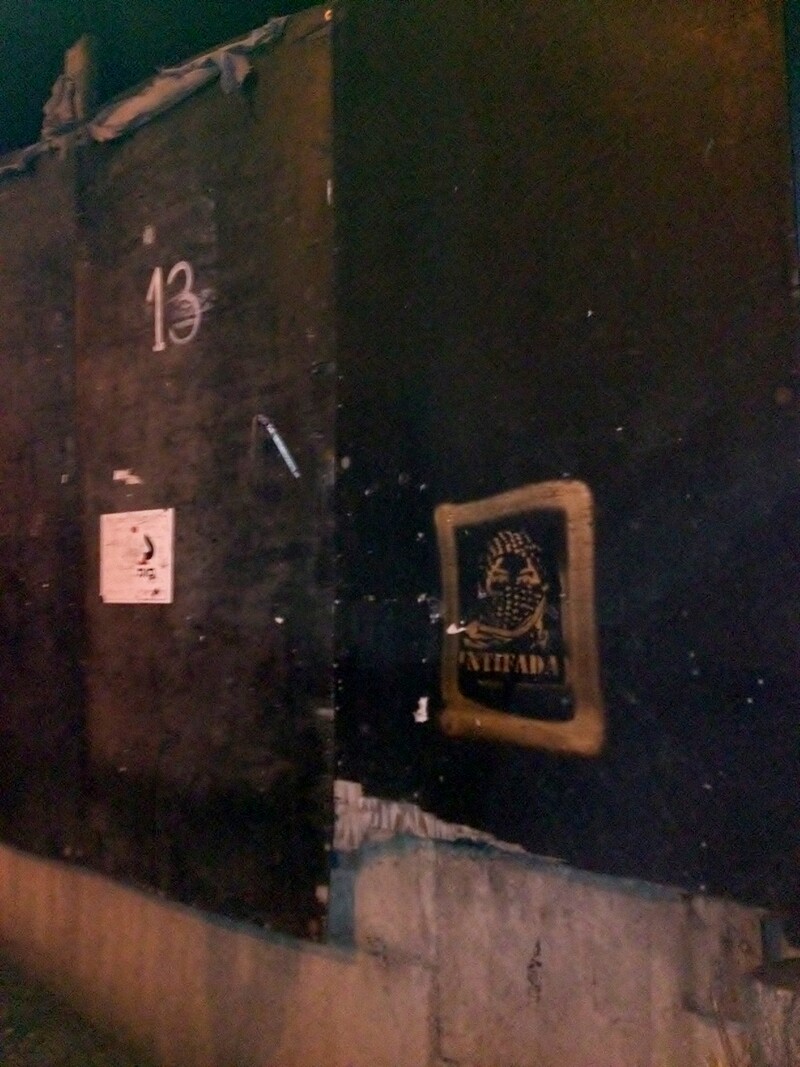
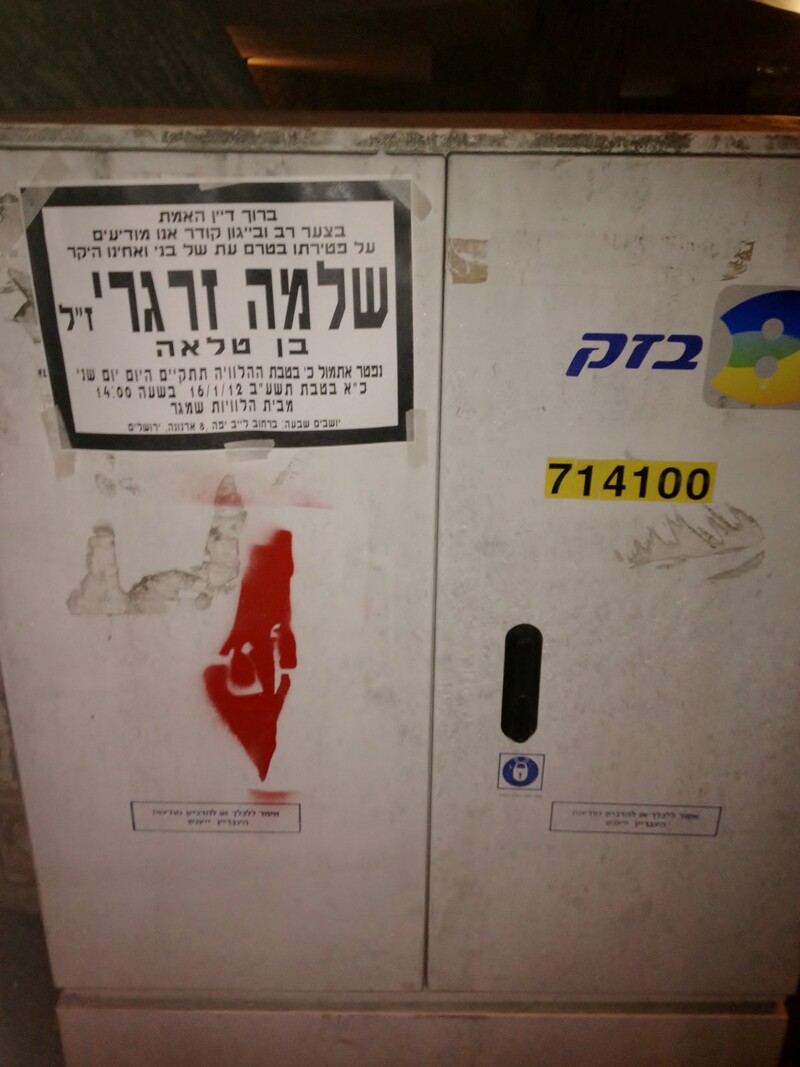
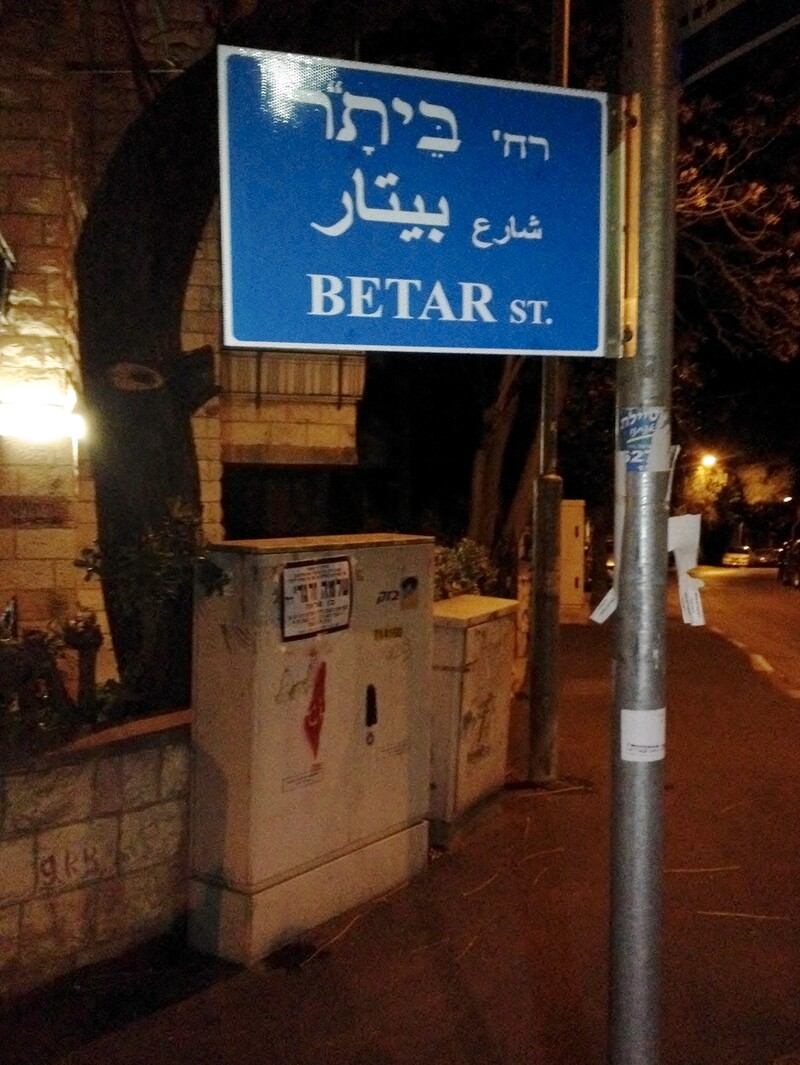
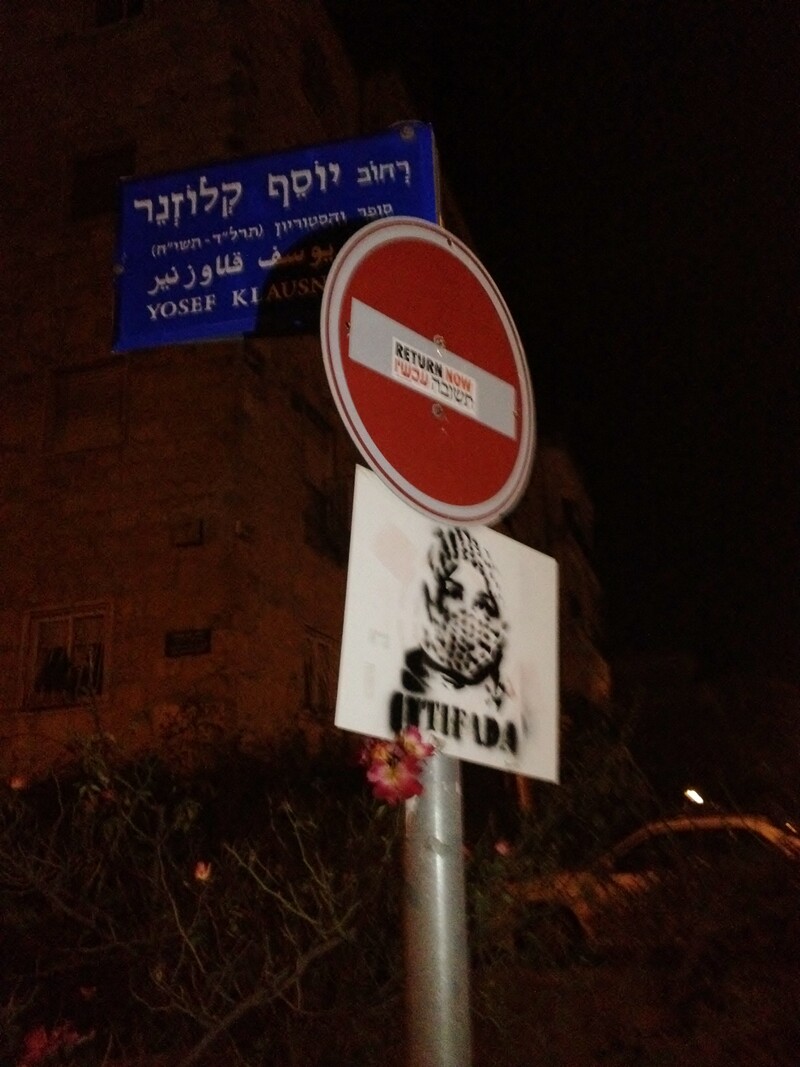
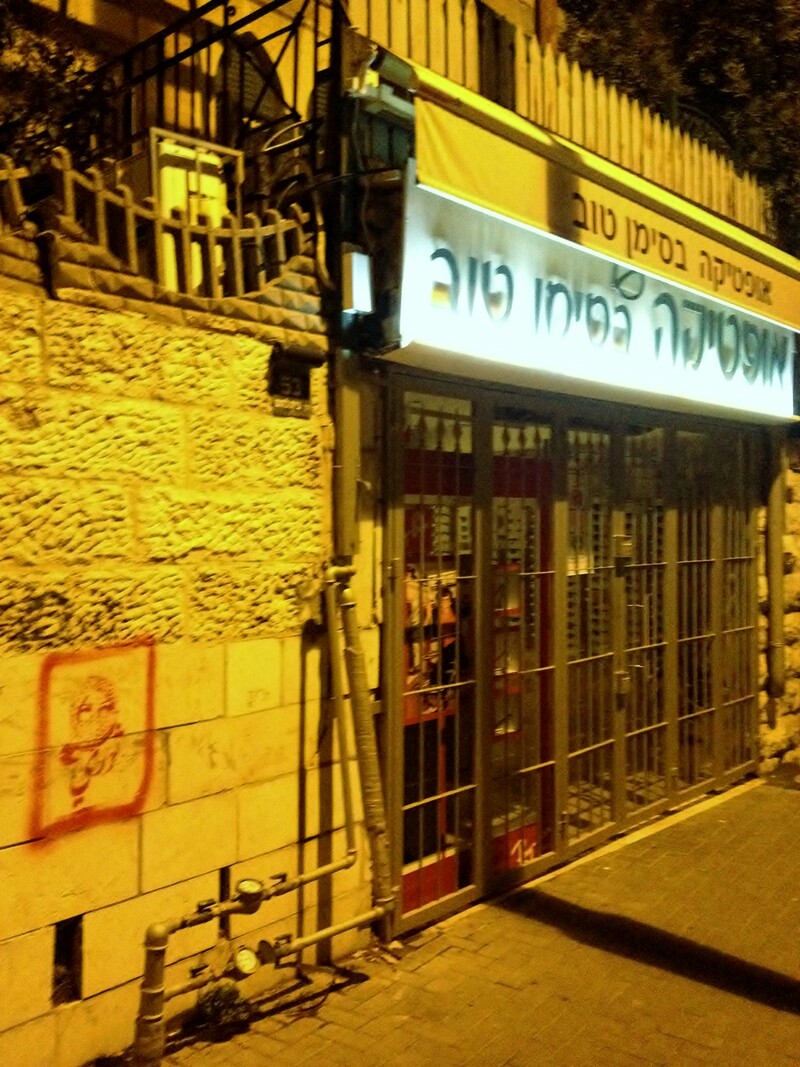
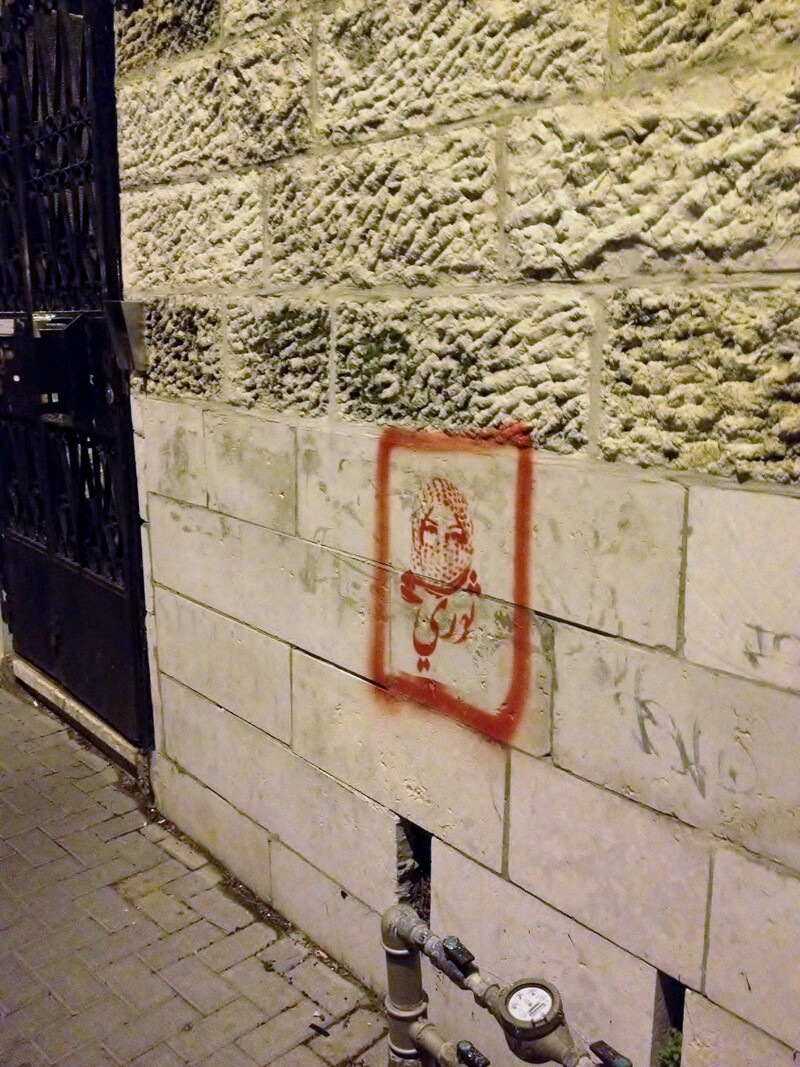





Comments
Time for more anti-PA street
Permalink Yusuf Koosa replied on
Time for more anti-PA street art in the West Bank now to counter the soft/westernized "occupy wall street" stencils that have been popping up as well as the fatah graffiti that is now making a come back with support for Abbas. (don't forget that fateh are the same people who were cleaning the walls from graffiti and martyr posters to make way for Jawwal advertisements only a year ago) they realize theres a battle going on on the walls, don't allow them to win it!
Hypocricy
Permalink Ronan Gallagher replied on
It's extraordinary to think that Palestinians had to get off their land to make way for Jewish people, who themselves had been almost wiped out by genocidal Europeans. Why didn't the Germans have to get off their land? Why not give Germany to the Jewish people? It was not the Palestinians who built the genocidal gas camps. It was white, middle class Europeans.
Graffiti art!
Permalink pam replied on
Awesome, bring the battle to their stolen streets, I wish I were there to do this, I look jewish and internaitonal, wow, just make them a little bit MORE afraid and INSECURE, keep doing it!
Write to Return
Permalink ewok replied on
Graffiti and Street Art provides one of the freshest acts of passive resistance to persecution, connecting the global awareness and BDS campaigners in acts of real human creative interaction. It is a whole new medium for these campaigns to explore, and even in its anonymity it really gives a human face to the daily struggle of oppressed Palestinians. Keep on keeping on!
PAINT FOR PALESTINE - http://www.facebook.com/events...
www.gangsofgraffiti.wordpress.com
If this was Egypt or Syria
Permalink Bobby replied on
If this was Egypt or Syria would media all over the world be raving about it?. Graffiti in Palestine has been around for about 30 years and came out of the need to communicate in the streets under occupation. This is not "art" like western graffiti tourism on the apartheid wall, it's a means of survival...this is not "design". They will not celebrate your graffiti in the west untill it looks like theirs. In Palestine, people can tell when it's graffiti by the people for the people, or when it's by a westerner (Or his local supporters and imitators ). Inside Ramallah for example you can see a bit of both, the western influenced design based graffiti (which assumes that graffiti came to Palestine by way of banksy) and the graffiti (and stencils) that has been going up on the walls of Palestine since the 70's but has constantly been erased by the powers that be, most recently by the PA. I hope this signals a come back to real action for the people by the people.